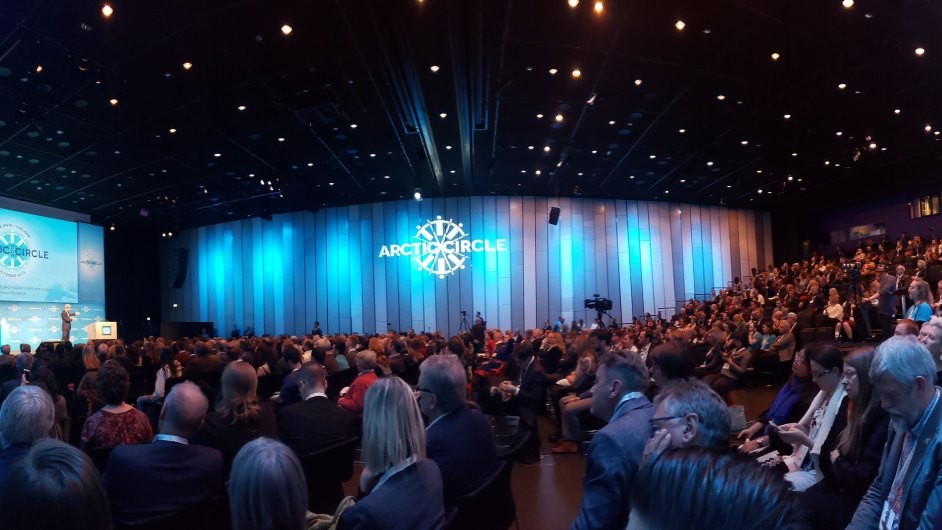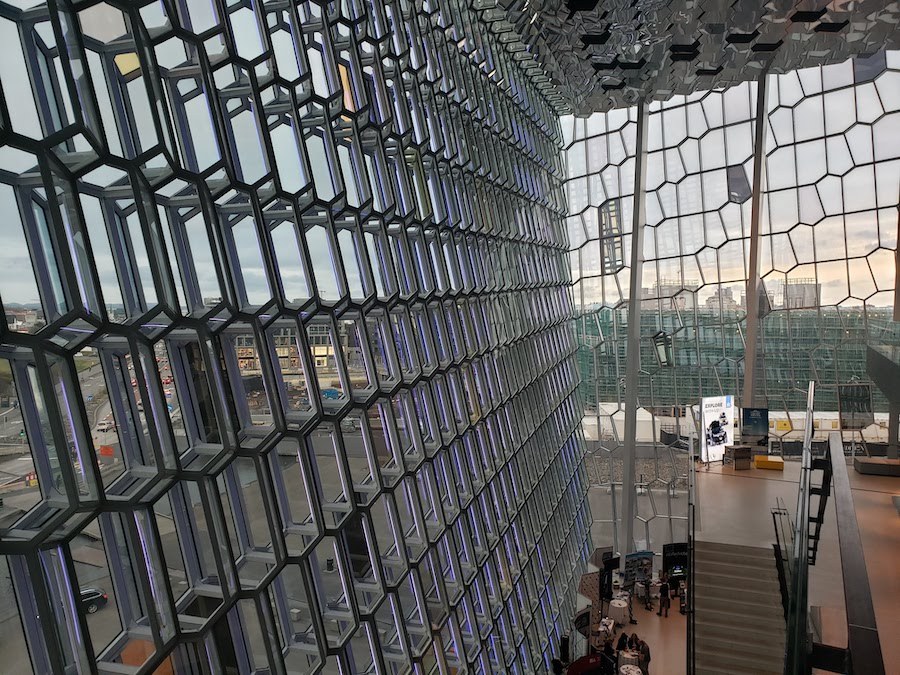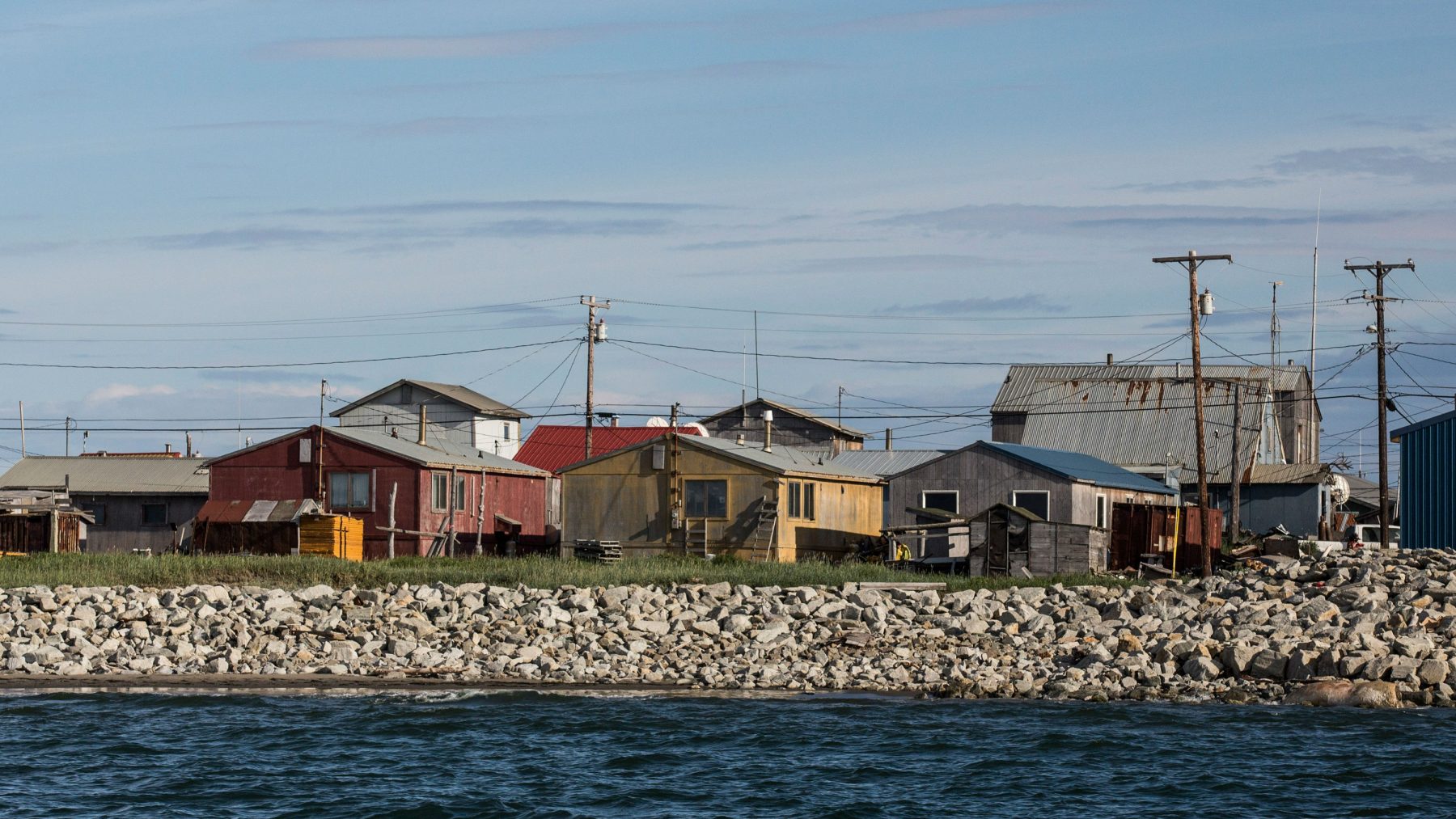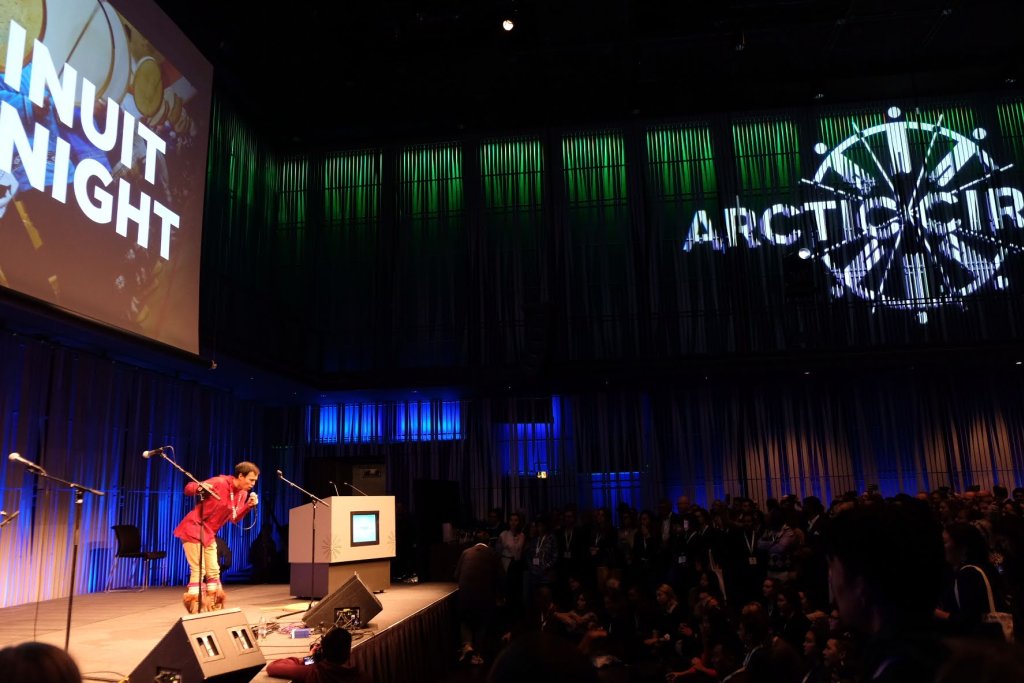Blog – Geoengineering climate fixes popular at Arctic Circle assembly

At Arctic Circle 2019, U.S. Secretary of Energy Rick Perry, it seemed, had not gotten the memo: Oil is out, and geoengineering is in.
This past weekend, as has happened every October for seven years now, over a thousand participants from around the world gathered in Iceland’s capital to discuss their visions for the future of the Arctic. At the first meeting of the Arctic Circle in 2013, natural resource extraction was the theme of the day. Numerous presentations opened by underscoring the 90 billions of barrels oil and 44 billion barrels of natural gas estimated to lie under the ice by the U.S. Geological Survey. A plenary on “Arctic Energy Cooperation” welcomed the chairman of Iceland’s Eykon Energy, which was exploring offshore oil opportunities at the time, the vice president of Norway’s Statoil, and the president of the International Council on Mining and Metals.
2013 was a world in which ExxonMobil was still prospecting for oil in the Kara Sea with Russia’s state-owned oil company Rosneft, a world before the Crimean crisis and Western sanctions on Moscow, before Vladimir Putin and Xi Jinping signed their historic $400 billion gas deal, and before Shell pulled out of the Alaskan offshore.
It was a world that still seems to exist in the mind of Secretary of Energy Rick Perry as he gave a barnstormer of a speech at this year’s Arctic Circle assembly on Thursday. While his fist-pump for big oil might still elicit cheers in the chandeliered ballroom of a soulless Houston conference room before the ribeye steak dinner, it was daftly out of touch in Harpa, Reykjavik’s opera house-cum-conference center, where lunch was served on edible wheat bran plates. Rick, it seemed, had not gotten the memo: Oil is out, and geoengineering is in.

From fossil fuels to climate fixes
Attending most of the Arctic Circle’s meetings over the past seven years has given me some perspective as to how the conversation about the region’s future has evolved over the better part of a decade. Over the years, everyone from former President of Iceland Olafur Ragnar Grímsson to former United Nations General Secretary Ban Ki-Moon and now, this year, former U.S. Secretary of State John Kerry, has said something to the effect that the “Arctic is at the front lines of climate change.” Even though the sun doesn’t rise for months on end in winter, the average temperature up north is rising twice as fast as the global average. In one plenary speech this year, Henry Tillman, founder and chairman of China Investment Research, pointed out that Siberia has witnessed temperature increases of an average of 2-7°C. This dramatic rise is enough to possibly allow year-round shipping along the Northern Sea Route by 2027.
It’s also enough of a rise to make one’s blood boil and question why we’re doing hardly anything to cut emissions – especially since, as Kerry warned in his speech, “Some thresholds, if we cross them, cannot be reversed.” As it currently stands, the business-as-usual scenario is putting the world on track to warm 3°C. That, as a 2018 study in Nature predicted, is enough to likely make the Arctic ice-free in summer every 1.5 years.
If we are miraculously able to meet the ambitious targets of the Paris Agreement – the landmark climate change deal which Grímsson, upon awarding Kerry the Arctic Circle Prize this year, remarked would not have been achieved without his leadership – the Arctic will be ice-free every five years.
If we are able to keep warming to just 1.5° (and pigs begin to fly), the Arctic will only lose its icy safety blanket every 40 years.
This wide range of probabilities underscores the drastic difference in environmental outcomes caused by a seemingly minor one-and-a-half degrees. Instead of a blue-ocean Arctic occurring every other year or so, the event would only happen twice in the average person’s lifetime if warming can be constrained.
Yet instead of limiting emissions and ensuring the planet stays “in an interglacial,” as one attendee phrased it, if the Arctic Circle is as much a bellwether of future attitudes towards climate change as the Arctic is of the process itself, we are headed towards a world of geoengineering.
Fighting climate change without kicking habits
While 2013 was a place where ExxonMobil, Shell, and Statoil were still the popular kids, 2019 marked the year in which the nerds exacted their revenge. Two geoengineering solutions were promoted on the Arctic Circle’s big stage.
First, a company called Ice911, which last year just had a small breakout session, this year took the main stage and held a side panel. Both events in 2019 featured ringing endorsements by University of Cambridge ocean physicist Peter Wadhams. The veteran Arctic scientist published a book in 2016 called A Farewell to Ice, but if the audience is to believe Ice911’s chief technology officer Lesley Field, who boasted of the planet-saving virtues of dumping billions of glass microbeads on the surface of the Arctic’s ice, Wadhams will soon have to hastily write a sequel called Hello Again, Ice.
Then, there was the presentation by Edda Sif Aradóttir, project manager of a European Union-funded carbon-capture start-up called CarbFix. The company has already successfully demonstrated how it can take CO2 emissions out of the air and transform them into rock, carrying out a process that takes nature thousands of years in just two. It was as if Silicon Valley, upon entering the Anthropocene, had discovered that it could also fix geology by producing a neatly packaged solution called geoengineering that would have no nasty side effects and require no real changes to anyone’s behavior. It’s probably no coincidence that CarbFix sounds like a magic diet pill that will allow you to keep eating donuts without putting on any weight.
Indeed, that’s exactly what these geoengineering solutions promise: to fix climate change without requiring society to make any hard-to-stomach changes. Perhaps even more exciting to the capitalists in the room, geoengineering technologies like glass microbeads and carbon capture offer more opportunities to invest. After all, there’s little money to be made in slowing down or cutting consumption and greenhouse emissions, which, let’s face it, are never going to be burning topics for plenary discussion.
The representatives for both Ice911 and CarbFix delivered slick presentations with refined graphics and edgy fonts that fit right into the aesthetics of the Harpa venue, designed by the Danish-Icelandic art-world darling Olafur Eliasson. Every corner of the building revealed a glimpse of the white-capped ocean through hexagonal, pastel-colored glass panes. The transparent façade provided a hypermodern-hygge backdrop for the chattering classes of the Arctic, who didn’t have to strain to make their voices heard over the live music as it alternated between soft Icelandic jazz and Chukchi throat singing.
While much of the world thinks of the Arctic as an icy and primeval Garden of Eden, the region is not so much land-before-time as it is future Earth. The Arctic is fast becoming a place where technologies are debuted by female scientists who say all the right things and where optics and rhetoric matter more than the actual product. It’s a place where geoengineering is cause for investment rather than moral outrage. It’s where – even if John Kerry did manage to get people to look up from their phones – people are, quite frankly, bored of hearing about not only climate change, but even climate mitigation and adaptation. It’s outré because now, to borrow a turn of phrase from Ice911’s CTO, we’ve moved on to “climate restoration.”

That is why Rick Perry’s speech felt not only out of place, but also passé. The Secretary of Energy tried his best to adopt the language of corporate social responsibility – he ventured that the United States would be able to develop oil and gas “sustainably” – but it rang hollow. When I first heard the former governor speak, I tweeted that I felt like I was being “rick rolled.” The 1980s (or the 2013 Arctic Circle Assembly, to be more precise) was calling, and it wanted its oilman back.
Upon further reflection, however, I realized that Rick Perry was basically saying the same thing as most of the other people on stages both big and small at Arctic Circle. In other words: “We’re going to develop in a way that’s going to be as green as possible and make as much money as possible.” The only thing is that for the audience to be convinced, the pitch can’t be delivered by someone with a Texan twang who hollers the words “freedom,” “America,” and “oil” a little too much for the largely European audience’s comfort.
Oil is still being sought in the Arctic – off the coast of Norway at the Goliat field (although exploration in the Lofoten Islands has been called off for now) and at Russia’s Prirazlomnoye field. The Government of Greenland, too, continues to issue licenses for exploration. It’s just that representatives from those countries now know better than to openly talk about fossil fuels. Apart from their discussions of Yamal LNG – which somehow gets a pass perhaps because natural gas sounds, well, natural – even the Russians have realized the poor optics of gushing about oil. Managing to make Perry’s bumbling rhetoric look even more retrograde in comparison, the Russians delivered one plenary presentation entitled, “Bringing Animals Back to the Arctic: A New Way to Fight Climate Change.”
One day, probably around when the world is 3°C hotter and the U.S. has finally stopped trying to reopen coal mines, the U.S. Department of Energy’s Office of Fossil Energy will cease to exist, thereby ending sessions that are about six years out of date such as this year’s “Developing Oil and Gas Resources in the Arctic: Technical and Economic Challenges.” In place of sending delegates from the unmodishly named office, D.C. will finally dispatch a delegation that will realize that geoengineering is the new kid on the block – only to likely refuse to sign any treaty regulating its applications.
As John Kerry said, “We have a group in Congress that views every international treaty as a loss of sovereignty” (except, of course, those that might involve purchasing another country like Greenland). The Arctic represents the future – one into which the U.S. is being dragged, kicking and screaming, at a subglacial pace.
The loss of the local

It’s a different story on the edge of Alaska, where the village of Shishmaref, which sits on a tiny low-lying island in the Bering Sea, is contending with the ravages of climate change rather than contemplating the new investment opportunities it creates. The settlement of 600 people faces inundation from sea level rise and coastal erosion. One of the town’s most accomplished youth, Esau Sinnok, a senior at the woefully underfunded University of Alaska Fairbanks who is currently suing the State of Alaska for promoting fossil fuel development to the detriment of future generations’ well-being, participated in one of the Arctic Circle’s final sessions. It was called, “Climate Change and Our Right to be Cold.”
During the session, the college student wistfully recounted growing up raised by his grandparents, playing “Eskimo baseball,” and running around with mini snot icicles dribbling off his nose. But Sinnok may be one of the last to live such a happy and gelid childhood. Without the fanfare of slides and bar charts and only a map depicting Inuit Nunaat (the Arctic Inuit Homeland) behind him, the young plaintiff stated matter-of-factly, “One day, my home won’t be there anymore unless we have $180 million to relocate. It’s just an everyday thought for me.”
Shishmaref, population 610, voted to relocate to the Alaskan mainland in 2016. No new-fangled geoengineering solution, however, is going to save Shishmaref. No money is forthcoming – not from the cash-strapped public sector and not from the private sector, which seeks solutions that are scalable rather than local.
That is the brutal reality of climate change. Even if events like Arctic Circle are doing an admirable job of bringing more Indigenous Peoples to the event and hosting celebrations like Inuit Night – where Sinnok roared, “You’ve had the mic for 500 years – now listen and let us have it for one hour!” – it will ultimately fall on the market rather than governments to solve climate change. The market, however, will go to where there is money to be made in tackling climate change rather than people and communities to be saved.

The problem with solving from the outside
Despite being the consummate statesman, even John Kerry conceded, “Everything’s moving faster except governance.” He later reflected on the problem of climate change, “I know the private sector is going to get it done. I just don’t know if it’s going to get it done on time.”
But capitalism is always on time. In fact, it is always ahead of itself, creating new crises as it solves old ones. At Arctic Circle this year, a presentation on “paving the Polar Silk Road” was followed directly by a discussion of restoring Arctic sea ice without any hint of contradiction or irony. Across a wider timespan, in 2013, the Arctic was a source of billions of barrels of oil. In 2019, the region has become a repository for billions of tons of carbon emissions.
In a recent book called Competing Arctic Futures, Marié van der Watt and Peder Roberts write that the Arctic is often seen as “a problem in need of a solution.” Arctic Circle does an excellent job of coming up with solutions. It’s just that they often address problems conceived from the outside rather than within.
This post first appeared on Cryopolitics, an Arctic News and Analysis blog.
Related stories from around the North:
Antarctica: Could snow cannons in Antarctica help avert catastrophic sea level rise?, Eye on the Arctic
Canada: What an ice-free Arctic really means, and why it matters so much, CBC News
Finland: Finnish EU presidency to work on stronger Arctic policy, climate change mitigation, Yle News
Iceland: EU calls for introduction of new Arctic governance structure, The Independent Barents Observer
Norway: Unfazed by youth climate protests, Norwegian gov expands Arctic drilling, The Independent Barents Observer
Russia: Climate change threatens security and industry, Russian PM says, The Independent Barents Observer
Sweden: Too young to vote, Swedish student Greta Thunberg goes on strike for climate action, Radio Sweden
United States: Heat stress that caused Alaska salmon deaths a sign of things to come, scientist warns, CBC News




